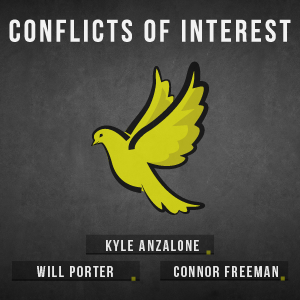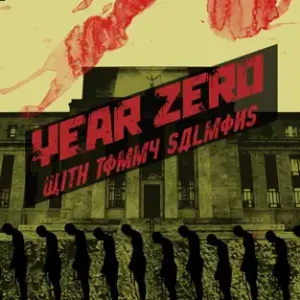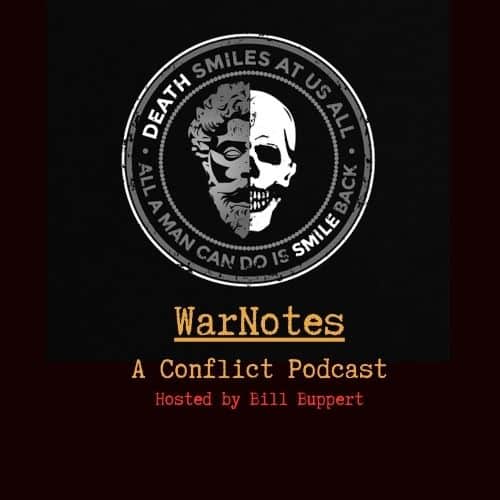My speech presented at the Ludwig von Mises Institute supporters’ summit on October 18, 2025.
Blog
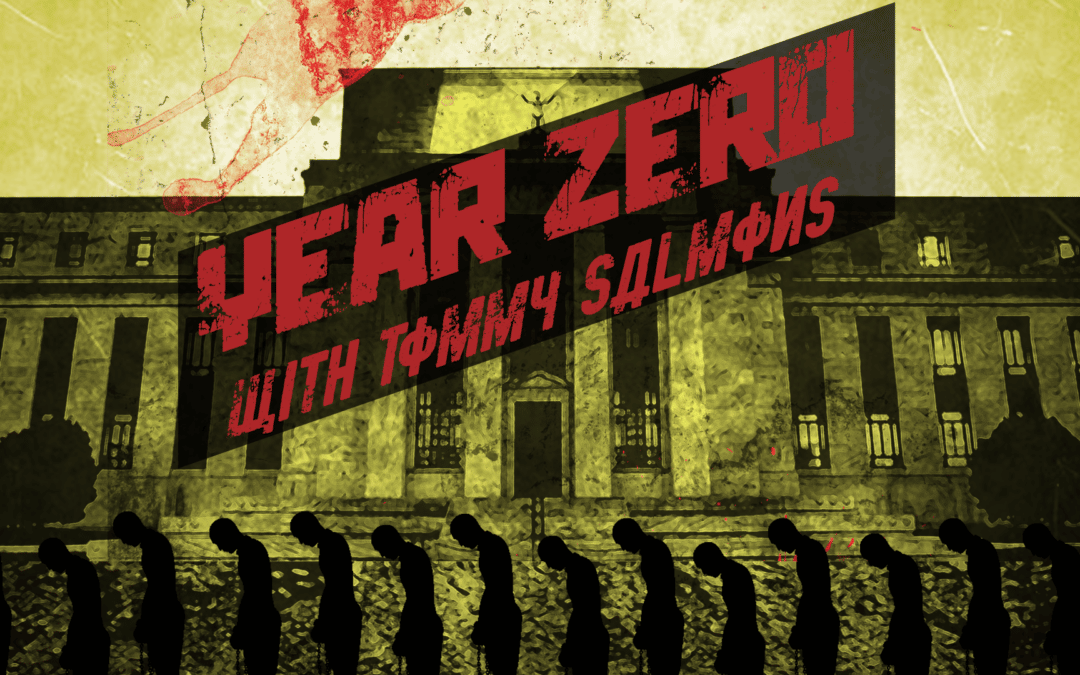
These People Vote & Tattoo Billy
I rant and interview Ed Begley
Podcast: Play in new window | Download
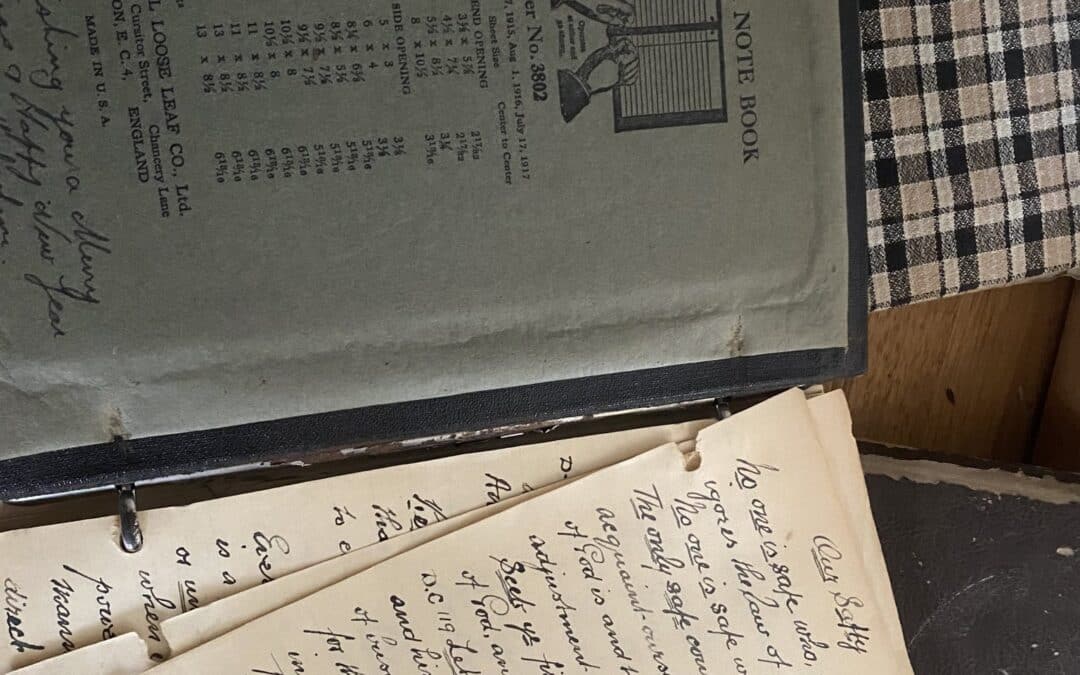
The Whispers Written In Ink
Over the years I have come across plenty of books that were destined for landfill. Whether through the various work places I had been, the charities which moved individuals from independence to “assisted” living and then the charity shops places themselves which can’t afford the bin fees to dump the excess they receive. Among these books, I have come across notes and journals. Small increments of intimate writing, sketches from a human past long forgotten but for these ink spots on paper, they remain as remnants that once mattered.
I had the intention of writing something cynical or even dreary, instead I found in the handwriting of those now long dead, some thoughts that seemed important enough to type up. From the minds of those who in their lives, a century or decades ago had a future ahead of them, reflected and observed, or even lashed out at a world around them.
Perhaps, this is a follow up to the meandering prose The Inner Light, or maybe inside of these words is an illuminating energy for any who care to read or ruminate upon. As we as a species once did.
In a diary, I found at a woman’s house who had passed away, she was in her late eighties, her family wanted, “everything thrown away,” so accordingly her life’s possessions reduced to landfill and the precious real estate she had lived in, the priority for the living, those who knew her and those who professionally gain from such occurrences. I salvaged what I could, to donate, or even keep. There is a tragic inhumanity to discarding photos, and notebooks like this. Physical media, technology once impressive now reduced to, meh, thrown away. The technology most often to be discarded, the book, especially those handwritten by regular people. A person like Mary and her diary.
Dated 1962, Mary wrote, “the birds have the idea to fly far and wide. They don’t see boundaries or care for language. They fly, high and wide. They visit where they please. It’s for us, mankind, to bury them inside cages. Imagine that, a creature capable of freedom, to clip their wings and cage them so we may watch them, make them sing for us. Imagine that.”
Imagine that. It’s with eerie camaraderie of thought that I reflect upon a piece, I wrote almost a decade ago which carries similar observance. Mary added further down the page, “I clipped my wings, or had them clipped for me. Who knows any more?”
She wrote in lovely handwriting in 1967, “I see they have sent more young men to another country to fight a war. I wonder what the gain would be. To stop communism? That’s what they claim. I wonder if they send warriors to fight the Viet-Namese over there so the politicians and powerful remain safe here. It seems pointless.”
And from 1968, “I have stopped believing in love. I must hear it in every song lyric. I don’t care for it. I will not have it. I have loved twice. Alistair and Nigel. Both loved me, I them. Alistair and I were young. Nigel, he should have known better. He picked a career over our love, now he travels the world and I stay here, lost and heartbroken. It’s what a man must do I am told. And, what a woman must wonder, hope for his safety and remain locked at home in blue tears? I will not have love spoken to me again.”
Many books have in them inscribed on the side of pages in tiny hand writing notes and thoughts to accompany the prose. One such book, a Penguin edition of The Essential James Joyce, Devesh had written his name in the early pages, along with the date 1995. I am assuming it was around that time when he wrote his notes.
“Why must he select words so ugly? He for a moment can write with elegance and superior texture and now he must be ever so dreadful.”
A few pages later, he wrote, “I wept.”
Among a pile of family bibles dating back to the late nineteenth century, I found a note book dated 1933 with glorious penship. The author, I am assuming a woman by the name of Bea. Much of the writing is on Christ and the human relationship with God. It is a selection of biblical quotes and additional thoughts relating to them. Beyond, I found a gentle sentence, “if I could find it in my heart to love my brother as much as I do God, then I would be a better sister.”
The following page she had written, “the measure of a man is in his character. Not his words. The measure of mankind is in the wisdom it finds from words.”
Another lady whose home had been reduced to a house for sale, had a library full of mystery and crime fiction. Agatha Christie, P.D. James, Ruth Rendell and vintage Dorothy L Sayers books. Alongside a row of books, she had a pile of notebooks filled in her handwritting, picking through clues and her own thoughts. Adding dates and page numbers, accordingly. Attempting to solve the crimes along with the author, page by page and sentence by sentence. At the end of one page full of notes she had written, “it’s never the most obvious lie, only the most ambitious truth told over and over again.”
Other journals and notebooks were less profound, slight monuments to the mundane of life. Bills to be paid, shopping lists, items to be bought. Others are notes on income, accounting for a household. What may seem ever modest in today’s inflated world, was dear and went far in a time before easy credit and debt dependency. In one note book payments and incoming money written light, along with slashing sentence written by a heavy hand, “You are a failure!”
And near the end of one such notebook, “Kill yourself, no one will miss you.” Many of the books, were from suicides. I am uncertain as to whether this one was. They all remain clumped together, thrown and discarded. Unimportant pages according to the living. Landfill.
When Bradbury imagined his fireman who burned books. The symbolism was dystopian and obvious. We live in a world now of proud illiteracy, it’s not just that books are seen as a hindrance in their physical form. Even online, they are things not to be read, unless they are trending, and forgive me, light escapism. In the many piles, I was unable to rescue, re-home. Were countless thoughts and whispers written in ink along with the printed words telling stories, revealing knowledge and recording history. All to be buried beneath dirt and rubbish.
Other books I have saved from landfill, to be pulped into cat litter. Feline toilets. An excess of books with no readership is one thing, a disdainful public above reading is an all together fascinating state of humanity. As the online content creators produce digital slop, artificial bots generating streams for the feed to be forgotten and many books what may reduced to memes and vapid quotes. There lies countless millions of words, wrapped in wisdom and experiences. Glimmers of alien and familiar viewpoints. many now lost to the edge of time.
In a page from a water soaked journal written by John, dated 1978, “I hope what comes in the next decade is a better world. A smarter age. To think soon it will be a new century, to call it the 21st century. The time will be a bright future and wise, smart people every one well read and enlightened. Healthy in mind and body. No more wars and slavery when the people are secure with knowledge. The 21st century.”
John also wrote, later on that year, “I love my wife. More than ever now that she is gone. Burying the woman you love is the hardest thing a man can do. I wish it was me and not her. I wish I took the cancer from her body. I hope in the coming years we learn to beat cancer and other diseases. I wish I had the answer and was a smarter man and a better one. I love you Carole with all of my soul. I wish I was a better man and husband for you. I am sorry. You deserved the promises I made. I failed you. I love you.”
Lost inside of pages, are human moments that are not fabricated for the frenzy of diminished attention spans. There are intimate moments, and triumphant ambitions. Language allows us to frame and understand things beyond the material, the present. The abstract, to spiritual and the elements beyond us.
I will end on one final entry, Jane, from perhaps 2005 wrote, “I was blessed with another grandchild. Five now. Tabitha is healthy and like her mother a little shit. I don’t have favourites, no mother should. If Tabitha grows to be a shit like her mother, I will have grey hairs. Too late, they are already grey!”

I Unequivocally Condemn…
DISAVOW
Podcast: Play in new window | Download
F-35 Failure Follies: First Step is Admit You’re Wrong

An F-35A Lightning II from Eglin Air Force Base flies with a KC-135 Stratotanker from the 121st Air Refueling Wing, June 16, 2024, before the Columbus Air Show. This year’s event featured more than 20 military and civilian planes, including a KC-135 Stratotanker from the 121st Air Refueling Wing, which served as the base of operations for military aircraft participating in the show. (U.S. Air National Guard photo by Staff Sgt. Mikayla Gibbs)
The GAO has published another rather garbled report trying to make nice on the awful performance and outrageous spending that is our favorite airborne punching bag, Fat Amy.
From the report, this will ensure you are far more confident in nonsensical disaster plan called the F35 Lightning II.
“The program plans to reduce the scope of Block 4 to deliver capabilities to the warfighter at a more predictable pace than in the past.”
By admitting that the program cannot deliver the jets that were promised is really an admission that the entire project is a failure. The implications of that could be profound beyond the money that has been wasted throughout the past quarter century. There are 19 countries that either already are, or will shortly, operate F-35s after buying them from the United States. Several countries like the United Kingdom, Norway, and Italy have been a part of the program well before Lockheed Martin won the contract to develop the F-35. These countries have invested heavily in the program with the expectation that they would receive the most combat capable aircraft in history. All have seen their costs rise throughout the years and now they find out that the jets will never live up to the hype.
So, in addition to being a military disaster, the F-35 many also prove to be a foreign relations disaster as well. F-35 boosters in the United States sold the jet to the leaders of these countries with elaborate pitches of the combat capabilities they planned to deliver. There were also promises made early in the process about the program’s affordability, which seem comical today. The next time an American attempts to sell a “transformative” weapon abroad, they shouldn’t be terribly surprised if a potential customer expresses skepticism. F-35 customers have paid a fortune above the quoted price, receiving only a fraction of what was promised. The United States may find a shrinking market for weapons exports in the years ahead.
This should be a moment of deep reflection for the entire national security establishment. The F-35 was never going to live up to expectations because its very concept was deeply flawed. Trying to build one jet that could serve as a multi-role aircraft to meet the needs of just a single military branch is a highly risky proposition. When you try to build a single jet to meet the multi-role needs of at least 15 separate militaries, while also being a global jobs program and political patronage scheme, you get a $2 trillion albatross.
Someone needs to be held accountable for this generations-lingering disaster that is going to put American manned combat aviation on the back foot unitl the middle of this century.
The quickest solution is to stop building these ineffective aircraft and admit to the existential crisis that is building a fleet of aircraft that have zero effectiveness in 21st century peer combat operations.
https://responsiblestatecraft.org/f-35-failure/
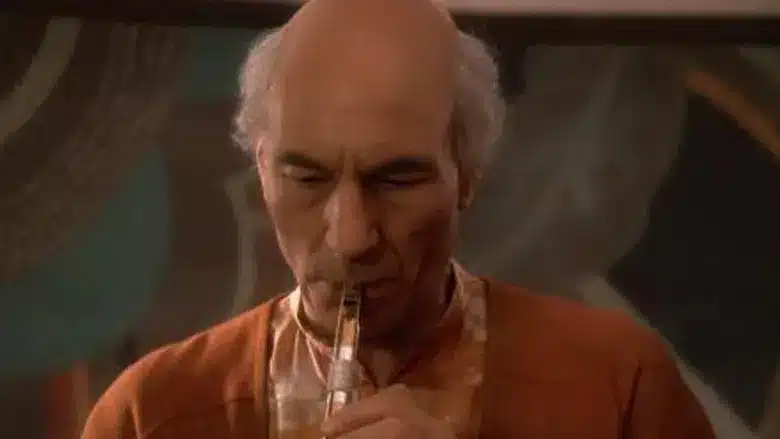
The Inner Light
Good story telling allows for us to experience the many human emotions that we understand, and know intimately. Despite its more recent incarnations, Star Trek told stories rich in life. An exploration for philosophy and humanity, challenged through narratives and character exchanges. Presented before, at times gaudy backdrops or technobabble laden jargon required to embed us into a place where technology itself is magic. In an episode from Star Trek – The Next Generation, Captain Jean Luc Picard found himself pulled into another life. One beyond a star ship, and the obligations of command.
The Inner Light, is about an alien probe infectingCaptain Picard, once under it’s influence he falls into a coma. Or, so it seems to his friends and colleagues. Picard is in a dreamstate, living the life of another man. A man, from the civilisation that had sent the probe out, on it’s journey.
Picard finds himself living as a husband, a father of two children. He is Kamin, from the planet Kataan. A lifetime of memories. Intimate and vivid. As Kamin, he loves his family. Proud and protective. He learns to play a flute, sitting beneath the sun which would soon doom the planet as he plays. Picard loses himself in his life as Kamin.
The score by composer Jay Chattaway gives us a simple and iconic sound. The flute sounding as though played by a man, a father, a husband. The music basic, though living. Optimistic and yet, sad. Twisting into a haunting melody, one that becomes an epitaph to the planet. Kamin, his family and the community he lived with and loved are long dead. Desperate to save themselves, all they can do is send out a probe. A lingering legacy of the planet and all who lived there. To be known. Remembered.
There could be no salvation, not from the might of ones own sun. Instead, the people lived and died beneath its cosmic indifference. And the probe, wandering the stars until it finds a mind to implant a life worth of memories. For Picard, it was Kamin. It is not that he learned about the people of the extinct planet, he lived them. Picard also understood himself better. Through the eyes and life of another man, another people.
It was a gift. A joyous life. All things must end.
Such story telling when written well, and with a human regard, can be a message of consideration and life or, in the Rick and Morty age, a punchline.
In the Christopher Reeves and Jane Seymour film, Somewhere in Time, the planet is not alien and far into the stars, but the past itself. As a college student in 1972, an elderly woman approaches Reeves handing him a gold watch, “come back to me.” Eight years pass and Reeves in a hotel, sees a beautiful young woman in a photo. It was taken in 1912, when that elderly woman was young. In a, ‘don’t think about it’, writers trick, Reeves returns to 1912 and falls in love with the woman from the photo.
Pretty and sentimental, carried by the music of John Barry, we have a movie that is not meant to make logical sense. Instead it’s to be felt, a romantic embrace assuring us love can overcome, in this case the tyranny of time. For, Picard as Kamin, it was also a tyranny of time, though one where the very people had been long extinct. In both depictions, life is precious. Moments are sacred and time, moves fast.
I loved a woman, who had in her room a poem written long ago by a poet on her death bed. I forget the poets name, only some verses and the meaning of the poetry remain with me. In her final years, the poet wished that she could have told her younger self to enjoy the hum of the bees, the scent of a flower and to gather them in fields far and wide. It’s only when the sands of youth have fallen by that we realise the wisdom of our elders all too late. The poetry of one with regrets, a barb beneath a flower.
The poem was dear, and majestic in its place of my then girlfriends mind, that years later she would have it as a tattoo. The words spiralling around Kamin’s flute from the episode, The Inner Light. For the real poet, and the fictional Kamin, the light had been long snuffed out. Though, through memory and their words they linger in our minds, our hearts. They can be washed by, not regarded or they can touch us, inspire thoughts and become so precious that skin permanently stained for them. Or, twenty years later I find myself writing on such a thing.
It’s with the distance of time that we can find ourselves lost on islands of regret, wandering the beaches with uncertain steps, only to see those impressions from others who walked the sands before us. Or, are they our own steps, we find ourselves re-tracing them, over and over again. Unable to reclaim them, or to steer ourselves in another destiny. Only to be reminded, of those footprints. For better and worse. The beach endless, until eventually we come to learn, the sand itself is us. A grain, washed by the waves of time, crashing or steady or in an hour glass, one by one running down.
In subsequent episodes, Picard would hold Kamin’s flute. His mind no doubt returning to a life he had lived, even if as a rationale man, he knows it was not his, or not even really a life that he did in really live. Those memories and moments ever as precious. His wife, unlike Jane Seymour to Reeves, can not hand him the flute and plead, “come back to me.” None of us can, even if we wanted to.
So what good are memories? If we don’t learn, and cherish them. If we don’t embrace them with dignity or misery, or joy and disappointment. We cannot learn without them. We can’t improve, or guide ourselves better if we are not reminded of regrets, shames and pains. We also don’t appreciate and value, life and those who we lived alongside, without those memories.
There is no inner light, or somewhere in time for any of us, without those memories. There is no future either if we can not understand our pasts, or what we did or did not do. We will repeat the worse of ourselves, if we do not reflect. Do not regret.
Through the eyes of Kamin, Picard felt love. Something he never truly experienced in his life as an officer in the federation. Family would become a dear character point, with the loss of his estranged brother, and then his nephew. Picard would be alone, the last of his family. He had chosen the stars, a career above all else. It had steered him into a life of objectives and ambitions, not love and tenderness. But for the memories of Kamin, The softer underbelly of a man who now could understand the depths of life, it would become his inner light.
There are stages, or maybe geographical points of our time lines we once lived and it was for that time, all we knew. All we had. We travelled through it, whether we wanted to or not. In time, that past becomes a distant memory, a place we once knew. Our own Kamin. Dare we return to it, what would we find?
Through the eyes of Kamin, and the probe, a planet of people can be remembered, not through cold demographics and archaeological data points, rather as living beings. With each, single being who is touched by the probes memories, a lifetime is shared. Precious. Not as a great empire of monuments, with statues and imperial might, to be remembered for its plunder and war. A people, familiar, and living who now are lost to the depths of the past. In living memory, for those who like Picard found their inner light.
Pick more flowers, smell them, listen to the bees, feel the touch of a lover, swim in the feral waters, look to the stars, find shapes in the clouds, the things that you think matter, in the end don’t. The things that truly do, are taken for granted. They pass on by, play the flute beneath the moon and sun. Unlike Kamin and his people, there is no probe to share our living world into the minds of another, only fabricated depictions and theatrical exhibitions. We only have those who know us, and who we know and knew for ourselves. What Picard experienced as Kamin was real, truth, a memory of life. Felt.
“ Live now. Make now always the most precious time. Now will never come again.”

Modern Parallels with the Spanish Civil War w/Karl Dahl
Karl Dahl joined me. This is not an exhaustive discussion on the parallels, but it is full of meat to chew on.
Podcast: Play in new window | Download

Corruption, NGO’s, and Government Function w/John Weeks
John joins me to discuss USAID, NGO’s, the shutdown strategy, and ANTIFA.
Podcast: Play in new window | Download




